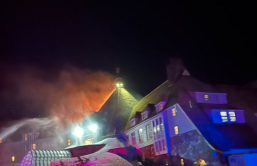El Niño conditions in 2015 and early 2016 changed rainfall patterns globally. In the Amazon, El Niño decreased rainfall during the wet season, making the region drier at the beginning of the 2016 dry season than any year since 2002, according to NASA satellite data. This can lead to disaster that could burn massive areas of the rainforest.
"Severe drought conditions at the start of the dry season set the stage for extreme fire risk in 2016 across the southern Amazon," said Doug Morton, an Earth scientist at NASA's Goddard Space Flight Center who helped create the fire forecast.
The researchers created a web tool, the Global Fires Emissions Database, which is updated daily using fire detection signals from the Moderate Resolution Imaging Spectroradometer instrument on NASA's Terra satellite and fire emissions data from previous years.
"When trees have less moisture to draw upon at the beginning of the dry season, they become more vulnerable to fire, and evaporate less water into the atmosphere," Jim Randerson, a scientist at the University of California Irvine, said in a press release. "This puts millions of trees under stress and lowers humidity across the region, allowing fires to grow bigger than they normally would."
"Fire forecasts three to six months before peak fire activity are important to identify areas with higher fire probability for integrated planning in support of local actions," said Liana Anderson, a scientist at the National Center for Monitoring and Early Warning of Natural Disasters.
While scientists have been working closely with South American officials to broadcast the results of the fire forecasts and raise awareness of fire risk, they also noted that the work could lead to better wildfire forecasts in other regions of the world.








